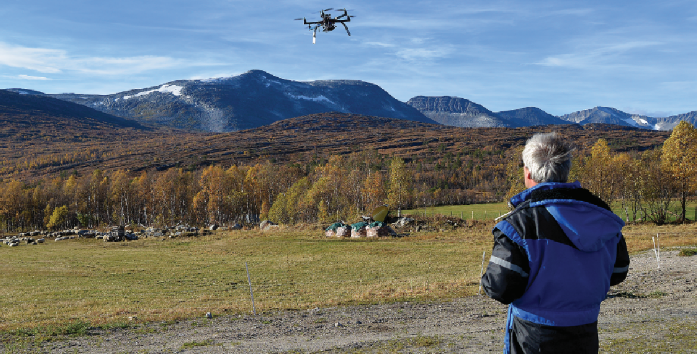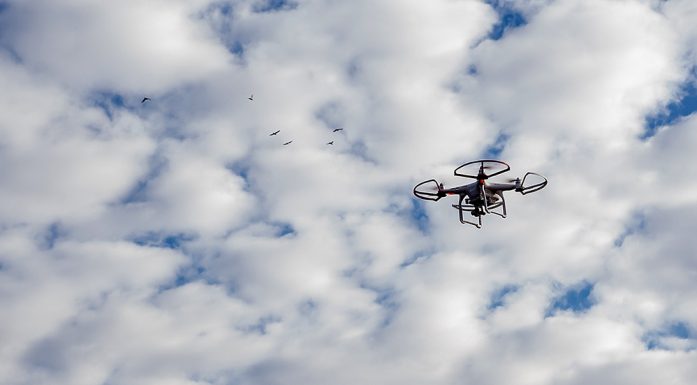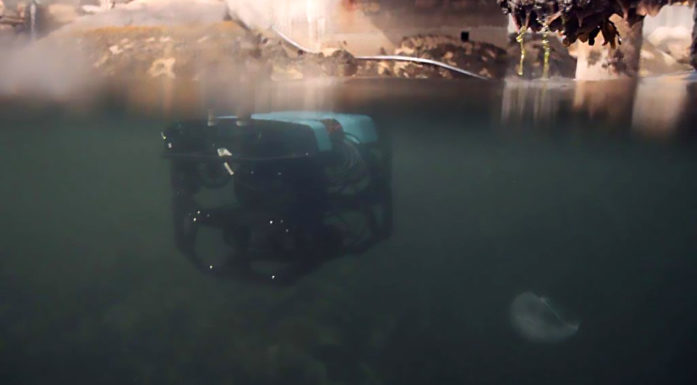Package delivery to your door by drone now one step closer
An airplane with significant ice build-up on its wings or propellers will sooner or later crash. Researchers at NTNU have come up with several findings that could enable drones to de-ice their wings automatically.
By Anne Sliper Midling - Published 02.12.2021
The passionate NTNU researchers behind the drone company Aviant will soon be flying blood samples from remote hospitals in places like Røros to St. Olav’s Hospital in Trondheim. Two such routes are already flying in Sweden.
Amazon dreams of delivering packages to your door with drones, while others envision using drones to search for people who have gotten lost in the mountains in the winter. Or how about examining a glacier with a drone?
Ice build-up on aircraft wings is one challenge that has to be solved before drones can realistically take on any of these tasks.
An airplane with significant ice build-up on its wings or propellers will sooner or later crash.
Just before take-off, a plane’s ground crew removes ice from the wings. During the flight, however, the pilot has to activate the de-icing system if it becomes necessary.
Icing leads to greater air resistance and drag on the wings, which needs to be offset with increased engine power.
Many types of aircraft without a pilot on board will be more common in the future. Drone technology is a fast growing technology that can be used for a wide variety of applications.
Icing of drones currently poses a serious hazard that significantly limits the use of unmanned aerial vehicles (UAVs or drones).
UAVs have no pilot on board to activate the de-icing system, so de-icing has to happen automatically.
Several researchers at NTNU are working to figure out exactly how this can happen. One of them is researcher Richard Hann. His field is engineering cybernetics, and he is also co-owner of the NTNU spin-off UBIQ Aerospace.
The NTNU researchers have tested different de-icing variants in a special wind tunnel in Finland that can simulate icing conditions.
The faster an aircraft flies, the greater the air resistance and drag on the aircraft. The resulting friction creates heat, which affects the ice build-up process.
Hann was one of several researchers who visited the Technical Research Centre of Finland (VTT) earlier this autumn. The findings from their experiments there could prove to be significant.
“For aircraft flying at high speeds, this heat can prevent ice from forming at temperatures near freezing. But drones, since they’re usually much slower than manned aircraft, can face severe icing conditions near the freezing point,” says Hann.
The researchers have now made several discoveries about how drones can remove ice automatically. One solution is to heat the exposed surfaces of the aircraft electrically with embedded carbon fibre materials.
“The experiments showed that de-icing using a heated surface provides the most energy-efficient ice protection,” says Hann.
The electricity creates heat that causes the ice to lose its grip.
In Nordic countries, ice can form on the wings almost year round, even in mid-July.
Now Hann and Tor Arne Johansen, a professor at NTNU’s UAV Icing Lab, have received many million Norwegian kroner from the Research Council of Norway to get to the bottom of several aspects of icing and unmanned aircraft.
All photos and videos are provided by the NTNU UAV Icing Lab with support from UBIQ Aerospace, except the last one, which is a stockphoto.
Package delivery to your door by drone is thus moving one step closer.
MORE NORWEGIAN SCITECH NEWS

LOADING CONTENT



